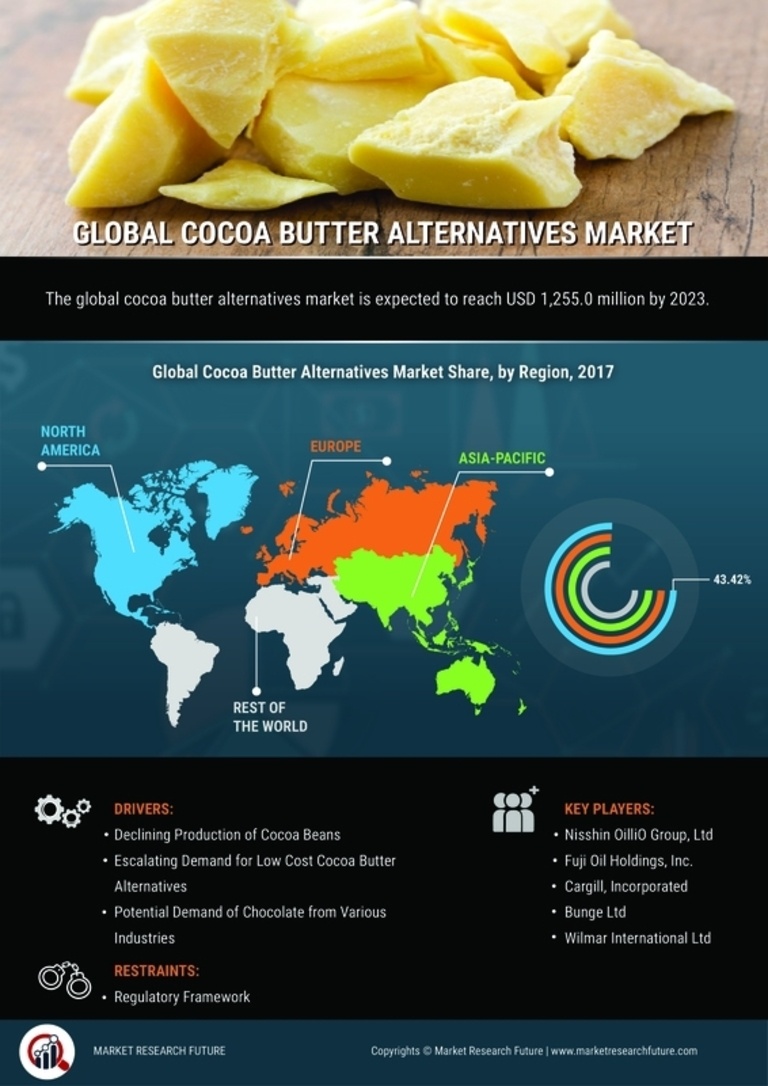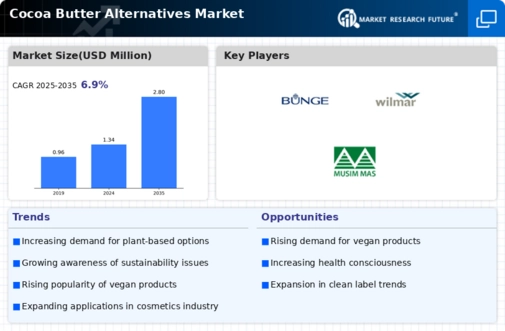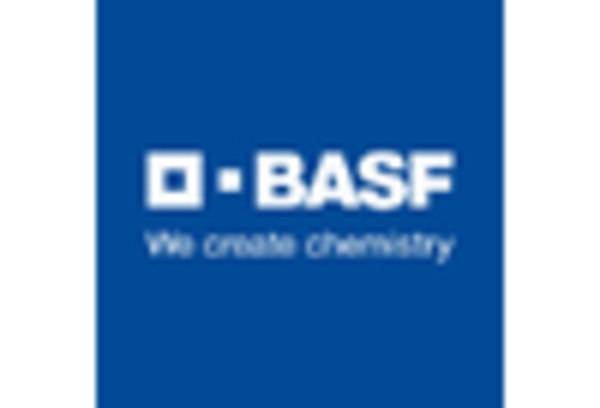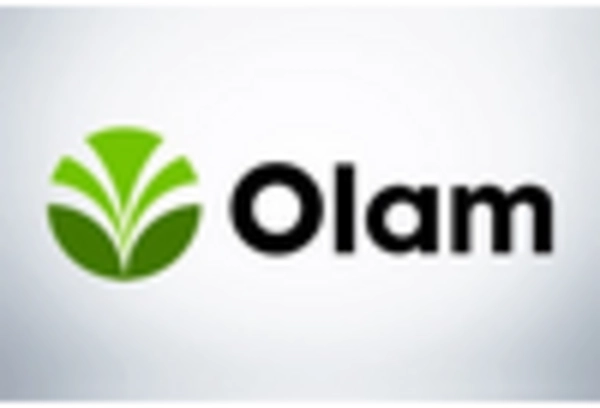Market Growth Projections
The Global Cocoa butter Alternatives Industry is projected to experience substantial growth over the next decade. With a current market valuation of 1.34 USD Billion in 2024, the industry is expected to reach 2.8 USD Billion by 2035, reflecting a compound annual growth rate (CAGR) of 6.93% from 2025 to 2035. This growth trajectory suggests a robust demand for cocoa butter alternatives across various sectors, including food, cosmetics, and personal care. The increasing consumer awareness regarding health, sustainability, and ethical sourcing is likely to drive this growth, positioning the industry favorably for future opportunities.
Health and Wellness Trends
The Global Cocoa Butter Alternatives Industry is significantly impacted by the rising health and wellness trends among consumers. With a growing awareness of the benefits of healthier ingredients, many consumers are opting for alternatives that offer lower saturated fat content and higher nutritional value. Cocoa butter alternatives, such as shea butter and mango butter, are perceived as healthier options, which enhances their appeal in the food and cosmetic sectors. This shift is likely to contribute to the market's growth, as consumers increasingly seek products that support their health goals. The industry's evolution aligns with the broader movement towards clean label products.
Rising Demand for Vegan Products
The Global Cocoa Butter Alternatives Industry experiences a notable surge in demand for vegan and plant-based products. As consumers increasingly prioritize health and sustainability, the shift towards veganism influences the market dynamics. In 2024, the market is valued at 1.34 USD Billion, reflecting the growing preference for alternatives to traditional cocoa butter. This trend is further supported by the rise of ethical consumerism, where individuals seek products that align with their values. The increasing availability of plant-based ingredients in food and cosmetics sectors propels the growth of cocoa butter alternatives, indicating a robust trajectory for the industry.
Innovation in Product Development
Innovation plays a crucial role in the Global Cocoa Butter Alternatives Industry, as manufacturers continuously explore new formulations and applications. The development of innovative cocoa butter alternatives that mimic the sensory properties of cocoa butter while offering distinct advantages is gaining traction. For instance, advancements in processing techniques enhance the texture and flavor profiles of these alternatives, making them more appealing to consumers. This focus on innovation is expected to drive market growth, with projections indicating a market value of 2.8 USD Billion by 2035. The ability to meet diverse consumer preferences through innovative products positions the industry favorably for future expansion.
Sustainability and Ethical Sourcing
Sustainability and ethical sourcing are increasingly becoming pivotal factors in the Global Cocoa Butter Alternatives Industry. As consumers demand transparency in sourcing practices, companies are compelled to adopt sustainable methods in their production processes. This shift not only addresses environmental concerns but also enhances brand loyalty among consumers who prioritize ethical consumption. The industry's commitment to sustainability is reflected in the growing number of certifications and initiatives aimed at promoting responsible sourcing. This trend is likely to bolster the market's growth, as consumers gravitate towards products that align with their values, thereby influencing purchasing decisions.
Expanding Applications in Cosmetics and Personal Care
The Global Cocoa Butter Alternatives Industry is witnessing an expansion in applications across the cosmetics and personal care sectors. As consumers increasingly seek natural and nourishing ingredients in their beauty products, cocoa butter alternatives are gaining popularity for their moisturizing and emollient properties. Ingredients like shea butter and coconut oil are being incorporated into a wide range of products, from lotions to lip balms. This trend is expected to contribute to the market's growth, as the demand for clean and effective beauty solutions continues to rise. The industry's adaptability to consumer preferences positions it well for sustained growth.

















